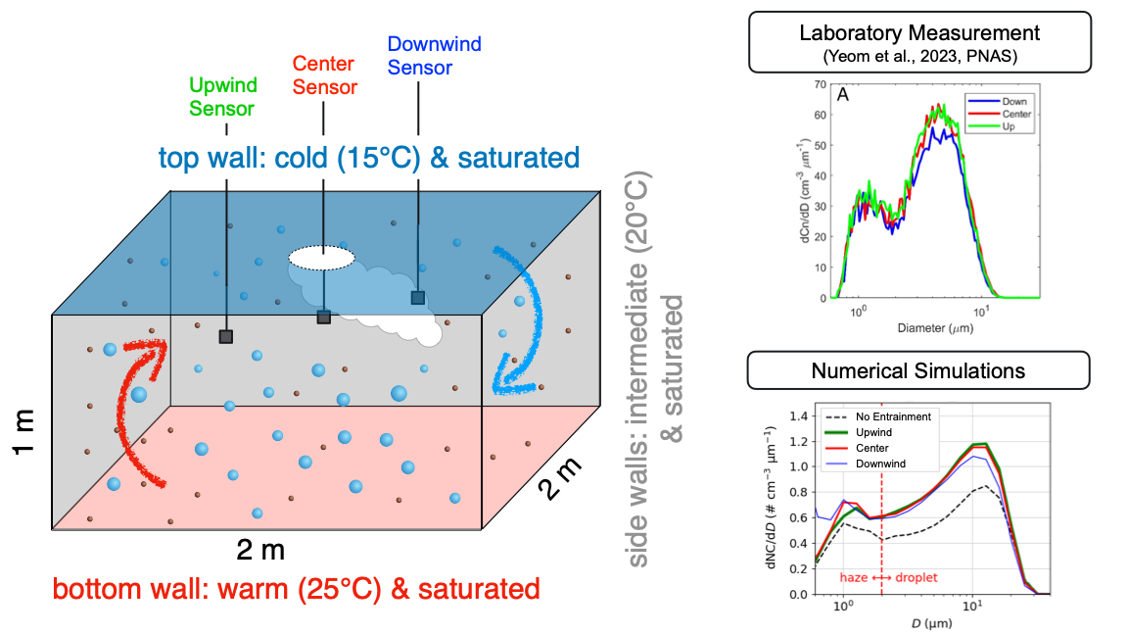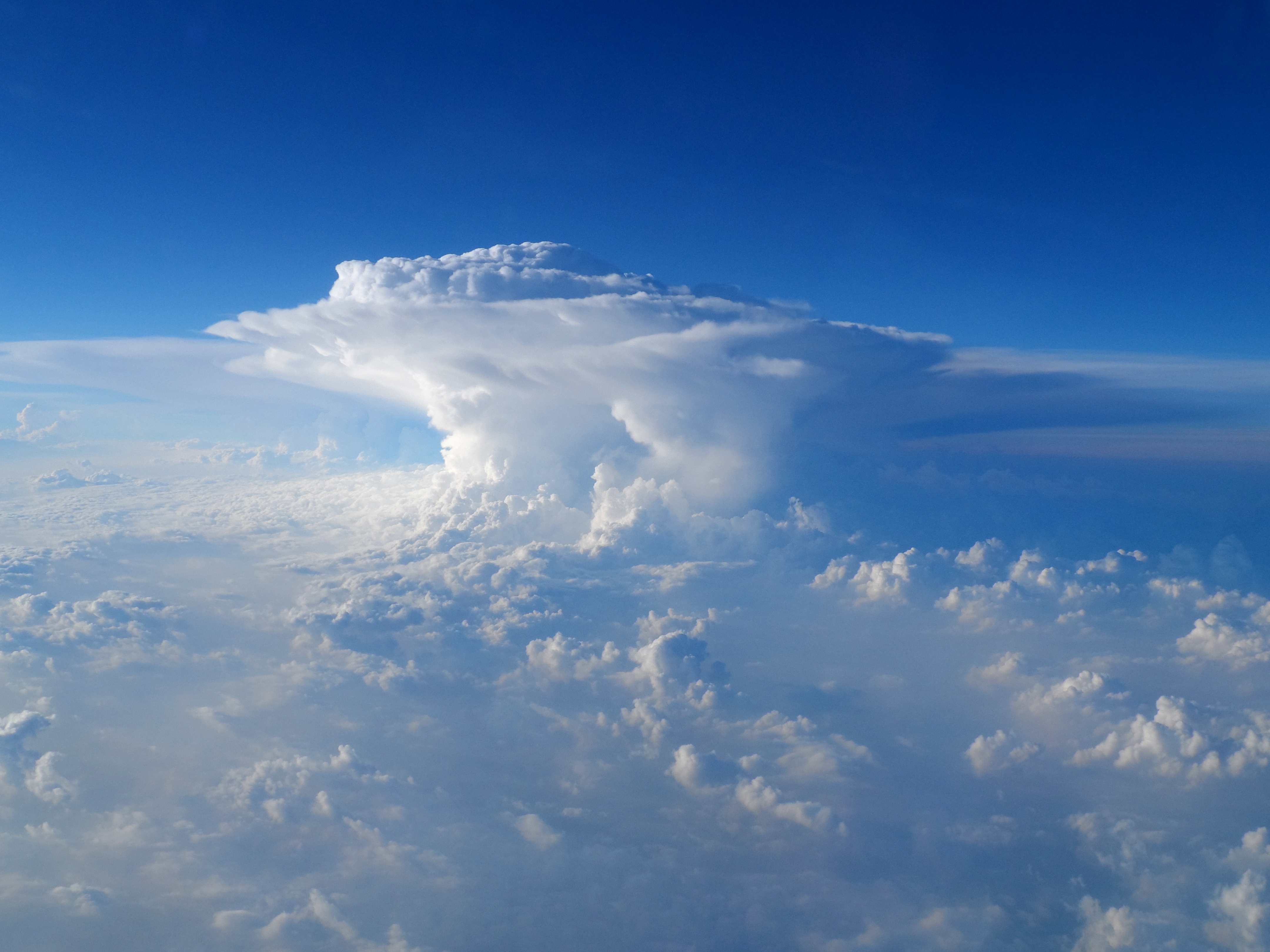Simulations reveal details of mixing of a cloud with dry air
Submitter
Ovchinnikov, Mikhail — Pacific Northwest National Laboratory
Area of Research
Cloud Processes
Journal Reference
Wang A, M Ovchinnikov, F Yang, W Cantrell, J Yeom, and R Shaw. 2024. "The Dual Nature of Entrainment-Mixing Signatures Revealed through Large-Eddy Simulations of a Convection-Cloud Chamber." Journal of the Atmospheric Sciences, 81(12), 10.1175/JAS-D-24-0043.1.
Science

The convection cloud chamber is used to study entrainment by pumping dry air into the chamber (left panel). Effects of entrainment are examined by comparing droplet size distributions (DSDs) upwind and downwind of the dry-air plume. Numerical simulations (lower right panel) predict the DSD changes that are consistent with the measurements (upper right panel) and can be used to better interpret and extend the laboratory experiments. Figure from Wang et al. (2024).

Entrainment of dry air evaporates the cloud droplets, but whether the evaporation results in the decrease in droplet size or number depends on how turbulence mixes the dry air with the cloud. This process is explored in laboratory and numerical models. Image by Jane Hartman|National Weather Service.
When environmental air becomes trapped in a cloud, a process known as entrainment can affect cloud radiative properties, precipitation formation, and ultimately the entire climate system. However, understanding how clouds mix with surrounding air at small scales remains a large challenge. If droplets evaporate quickly at the cloud edges before turbulence thoroughly mixes cloudy air with dry air, entrainment tends to decrease the droplet number concentration. If turbulence mixes the dry air and cloud droplets rapidly, the entrainment primarily reduces droplet size. Laboratory experiments have shown that evaporation is generally faster, but the results may appear as if turbulent mixing dominates when comparing different entrainment events. This study uses numerical simulations to confirm the laboratory experiments, analyze additional experimental variables, and reveal three-dimensional spatial details that local sensors in the laboratory cannot capture.
Impact
Better understanding how clouds mix with surrounding dry air is crucial for accurate weather and climate predictions. This research shows how advanced computer simulations of cloud processes can be used to reproduce, interpret, and extend the entrainment experiment in a convection cloud chamber. The laboratory-observed entrainment signatures are confirmed by numerical simulations. Additionally, simulations show that the signature of evaporation being faster than turbulent mixing is weakened in a polluted cloud or/and with a coarser grid spacing. Lastly, the simulations provide the spatial distribution of cloud properties for examining how the entrained dry air mixes with the cloud in more detail. These results guide further laboratory experiments and help scientists refine cloud representations in weather and climate models.
Summary
Large-eddy simulations and size-resolved microphysics can resolve time scales for turbulent mixing and evaporation. This makes them well-suited tools for reproducing, extending, and interpreting the entrainment experiment in the convection-cloud chamber. The results from these simulations confirm: (i) the inhomogeneous mixing signature (i.e., evaporation of cloud droplets is faster than turbulent mixing) for an individual entrainment event, and (ii) the appearance of homogeneous mixing (i.e., turbulent mixing is faster) in an ensemble of entrainment episodes. This study also demonstrated that the inhomogeneous mixing signature is more pronounced in a polluted cloud, but coarser grid spacing in simulations could reduce the accuracy of this signature. Lastly, simulations facilitate an easy analysis of wall flux adjusted for varying entrainment intensities, which explains the homogeneous mixing signature. This mechanism is challenging to confirm in cloud chamber experiments, as there is no direct method to measure wall flux.
Keep up with the Atmospheric Observer
Updates on ARM news, events, and opportunities delivered to your inbox
ARM User Profile
ARM welcomes users from all institutions and nations. A free ARM user account is needed to access ARM data.


















